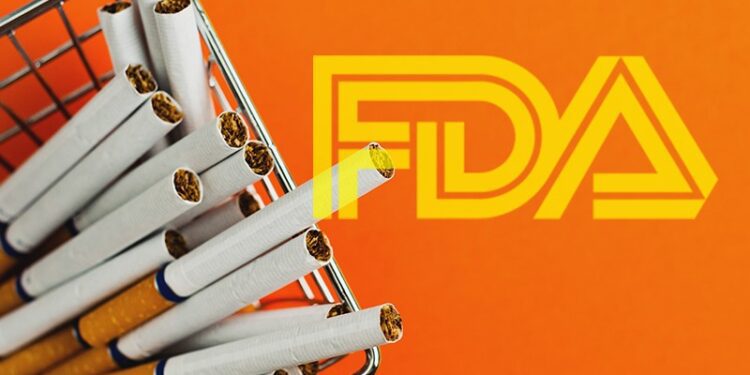Public perception is a funny thing. It’s an illusion we all see, know full well it’s an illusion, and we accept it. Through public perception, lies become truths and opinions become law.
“I’m fully aware of the misperceptions that are out there and aren’t consistent with the known science. We do know that e-cigarettes — as a general class — have markedly less risk than a combustible cigarette product. That said, I think it’s very critical that we inform any communication campaigns using science and evidence. It has to be very carefully thought out to ensure that we’re maximizing impact and avoiding unintended consequences.”
Those were the words of Dr. Brian King, Director of the Food and Drug Administration’s (FDA) Center for Tobacco Products (CTP), conveyed in a recent interview when asked about the balance between traditional cigarettes – the combustible cigarette product – and electronic cigarettes, better known as vaping cigarettes.
He was nuanced and insightful in the interview, keen to parse through the clinical evidence and the compromises needed to enact public health policy. Yet, his words stand in contrast with the administrative actions of the FDA, which recently requested the Department of Justice (DOJ) to file injunctions – a court order requiring an entity to cease a specific action – against six vaping cigarette manufacturers. The injunctions demand the six companies immediately cease the production and sale of their electronic cigarettes.
It was a blunt and direct action, one that contradicts Dr. King’s earlier words. Whereas before he was keen to stick to clinical data, now it appears he’s willing to be quite heavy-handed.
“We will not stand by as manufacturers repeatedly break the law, especially after being afforded multiple opportunities to comply.”
This was Dr. King in an excerpt cited from the official notice provided by the FDA detailing the injunctions unveiled in coordination with the DOJ. He was referencing the many warning letters issued by the FDA to the six companies. Indeed, the FDA had made multiple attempts in good faith, requesting the companies to comply with their standards.
Between January 2021 and September 2022, the FDA issued nearly 300 warning letters. Despite the sufficient notice, the companies failed to comply. As a result, for the first time, the FDA initiated injunction proceedings to enforce their regulations.
In all fairness, these six manufacturers left the FDA with no choice. They were all warned, educated on the regulatory requirements, but failed to comply.
When viewed in isolation, it seems like the appropriate course of action by the FDA. In the world of public perception, however, it feels like something different. It feels like the government is encroaching into the vaping cigarette industry.
When phrased in such an explicit way, it sounds preposterous. The FDA was simply enforcing regulatory rules that all tobacco companies must comply with. What’s the harm in that?
Well, the harm comes from the unintended consequences, which manifest through the public perceptions gleaned by the media coverage. This injunction, when coupled with other acts of federal oversight, namely the string of lawsuits against lead vaping manufacturer Juul, and the growing number of crackdowns against illicit vaping manufacturers, feels like another nail in the coffin for vaping.
Most of the internet feels the same way. Since the injunction was announced, the number of Google searches for “vaping” and “banned” has increased significantly. Even the framing of vaping on the internet has shifted. We see article after article highlighting the same refrain that begins by claiming how we all erroneously believed vaping was a safer alternative, and ends by referencing studies that highlight the side effects of vaping while coupling it with adolescent drug use, as though it’s the preferred drug of abuse among teens.
This is yet another instance of good reporting leading to unintended misinformation. Journalists use data to tell stories. As it currently stands, the data show teens are suffering from lung injuries because of vaping abuse.
While vaping is undoubtedly abused, it’s also helpful when used in the right context. That’s the problem. Data is often manipulated to tell only a part of the story. The context gives data clinical relevance.
The average age of those who indulge in vaping cigarettes is comparable to those who use traditional cigarettes and most usually begin after switching from traditional cigarettes. Clinical studies authorized by the National Institutes of Health (NIH) verify that vaping is safer than traditional cigarettes, when the two are evaluated side by side, as one alternative versus the other. The heightened risk of vaping comes mostly when it’s combined with traditional cigarettes, as the two lead to different forms of lung injury. The context of use determines the overall risk to the user.
But the framing has been set, and now the die is cast. The narrative that vaping is more dangerous than traditional cigarettes and that it’s a drug of abuse among adolescents has been firmly cemented into the American zeitgeist. And no data, no matter how well conveyed, can undo the damage caused by public perception.
The greatest irony of all is that the person who is most aware of the damage caused by the unintended consequences of false narratives is also the one creating those perceptions.
















This is a reasonable article. However, no one has ever used the term “vaping cigarettes.” They are electronic cigarettes, better known as e-cigarettes — or just vapes.
Thank you for the clarification.